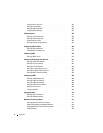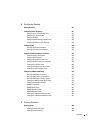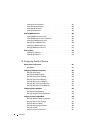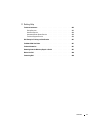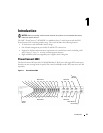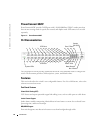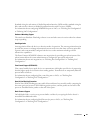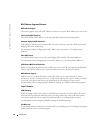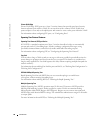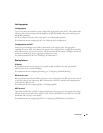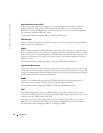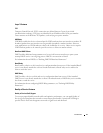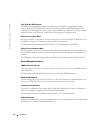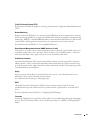
26 Introduction
www.dell.com | support.dell.com
MAC Address Supported Features
MAC Address Support
The switch supports up to 16K MAC addresses and reserves specific MAC addresses for system use.
Self-Learning MAC Addresses
The switch enables MAC addresses to be automatically learned from incoming packets.
Automatic Aging for MAC Addresses
MAC addresses that have not seen any traffic for a given period are aged out, which prevents the
Bridging Table from overflowing.
For information about configuring the MAC Address age-out period, see "Viewing Dynamic
Addresses."
Static MAC Entries
User-defined MAC entries are stored in the Bridging Table with the self-learned addresses.
For information about configuring the static MAC addresses, see "Defining Static Addresses."
VLAN-Aware MAC-based Switching
Packets arriving from an unknown source address are sent to the CPU and added to the Hardware
Table. Future Packets addressed to or from this address are more efficiently forwarded.
MAC Multicast Support
Multicast service is a limited broadcast service that allows one-to-many and many-to-many
connections. In Layer 2 multicast services, a single frame addressed to a specific multicast address
is received, and copies of the frame to be transmitted on each relevant port are created.
For information about configuring MAC Multicast Support, see "Multicast Forwarding Support."
Layer 2 Features
IGMP Snooping
IGMP Snooping examines the contents of IGMP frames when they are forwarded by the switch
from stations to an upstream multicast router. Snooping enables the switch to identify stations
interested in multicast sessions and which multicast routers are sending multicast frames.
For information about configuring IGMP Snooping, see "IGMP Snooping."
Port Mirroring
Port mirroring monitors and mirrors network traffic by forwarding copies of incoming and outgoing
packets from one port to a monitoring port.



